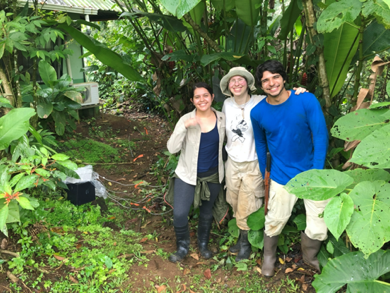This research stream focuses on understanding how surrounding ecological environments have evolutionary consequences for organisms. Thus, students ask questions aimed to better understand the reciprocal interactions between ecology and evolutionary processes over time and space. For example, they study how plants and animals from different locations differ in their life cycle timing, thermal tolerance, and genetics.
Besides investigating the links between genotype, phenotype and environment, students explore how humans change the environment and the consequences that these anthropogenic pressures have for the evolution of populations and species. In many cases, the results obtained from this topic have practical implications as management for threatened species or developing control strategies for invasive species.
Ecological Genetics is cross-disciplinary in nature
Ecological Genetics
Ecological genetics is a multidisciplinary stream which intersects the disciplines of genetics, physiology, ecology and evolution using state-of-the-art techniques in genomics, transcriptomics, ecophysiology, field ecology and bioinformatics.
Ecological Genetics Research Educator

Dr. Christina Baer is the new Research Educator for Ecological Genetics. She researches how organisms’ behaviors and traits influence their interactions with each other and the environment. She studies how effective different traits are as defenses against predators and how other traits can predict organisms’ responses to human-caused environmental changes such as climate change. Her research focuses on insects and other invertebrates because they are both easy to manipulate and are some of the most diverse animals on the planet. She uses a combination of molecular taxonomy, phylogenetics, physiology, field experiments, and behavioral observations to answer these questions. For more information about her research and publications, check out https://christinabaer.wixsite.com/csbaer.